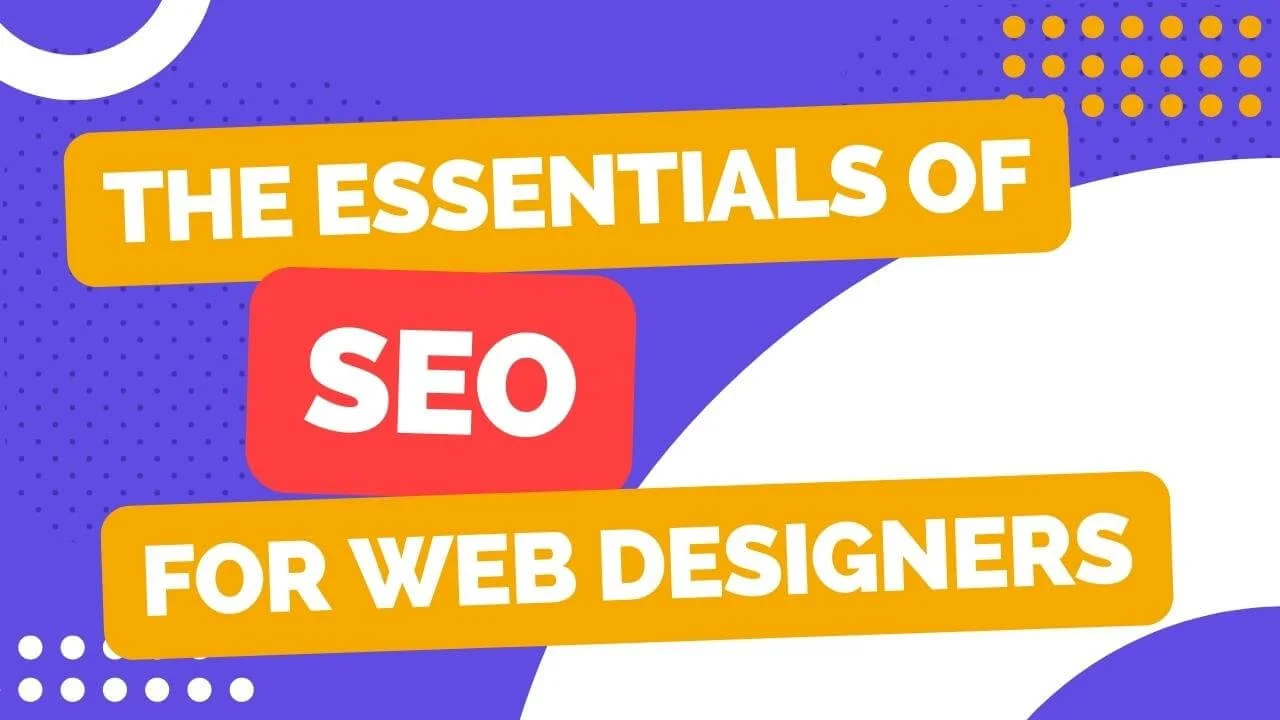The Essentials of SEO for Web Designers
The Essentials of SEO for Web Designers
As a web designer, I know firsthand that crafting a beautiful website is just half the battle. The real challenge lies in making that website findable and useful for your audience. That's where SEO comes in. In my latest blog post, I delve into the essentials of SEO that every web designer needs to know. We'll talk about everything from keywords to website structure and speed, mobile optimization, the importance of quality content, and why SEO is a continual process. Plus, I'll share my personal tips for success. Join me in exploring how good design and thoughtful SEO work hand-in-hand to create successful websites.
Cullen Fischel | JUNE 11, 2023 | 5 min. read
5 minute read
By Cullen Fischel, website designer
Key Takeaways
SEO is crucial in driving organic traffic to a website and enhancing its visibility on search engines.
Keywords play a pivotal role in optimizing a website's SEO.
A well-structured website with clear navigation is vital for SEO.
Website speed and mobile optimization significantly impact SEO.
Content is king in SEO - unique, valuable, and regularly updated content helps improve search engine rankings.
SEO is a continuous process that requires regular monitoring and adjustments.
SEO, or Search Engine Optimization, is an indispensable component of web design. As a web designer, understanding SEO's essentials is crucial in creating websites that not only look good but also perform well on search engines. This blog post will walk you through the essentials of SEO for web designers and provide actionable tips to incorporate into your web design process.
Understanding SEO and Its Importance
SEO is the practice of improving a website's visibility on search engine results pages (SERPs). It involves optimizing various aspects of a site, including its content, structure, speed, and mobile-friendliness, to make it more appealing to search engines like Google, Bing, and Yahoo.
But why is SEO so important? The majority of online experiences begin with a search engine. When your website ranks higher on SERPs, it attracts more organic (non-paid) traffic. More traffic often translates into more leads, conversions, and ultimately, more business. Furthermore, appearing on the first page of search results enhances your brand's credibility, as users often perceive the top results as the most relevant and trustworthy.
Keywords and Their Role in SEO
Keywords are the bridge between what people are searching for and the content you provide to fill that need. Identifying and using the right keywords can help drive targeted traffic to your site.
However, keyword optimization is not just about including as many keywords as possible. This practice, known as keyword stuffing, can actually harm your SEO as search engines may perceive it as spammy. The key lies in using keywords strategically and contextually within your content, titles, URLs, meta descriptions, and image alt tags.
Moreover, remember to focus on long-tail keywords (phrases with three or more words). They are often less competitive and can drive more qualified traffic due to their specificity.
Website Structure and Navigation
A well-structured website helps search engines understand your site's content and context. When your site has a logical hierarchy, search engines can crawl and index its pages efficiently, improving its search visibility.
Website navigation plays a pivotal role in user experience and SEO. Clear and intuitive navigation makes it easier for visitors to find what they are looking for, which can reduce bounce rates and increase time spent on your site. These user engagement metrics are considered by search engines when ranking websites.
Website Speed and Mobile Optimization
Page loading speed is a significant factor in user experience and SEO. A delay of just a few seconds in page load time can increase bounce rates and negatively affect your site's ranking on SERPs. Website speed optimization techniques include enabling compression, minifying CSS, JavaScript, and HTML, optimizing images, and leveraging browser caching.
Mobile optimization is another crucial aspect of SEO. With mobile internet usage overtaking desktop usage, search engines have shifted towards mobile-first indexing. This means that Google predominantly uses the mobile version of your site for indexing and ranking. Thus, having a mobile-friendly website is no longer optional but a necessity.
Content Is King
Quality content is the backbone of SEO. Regularly creating original, engaging, and valuable content can significantly improve your site's SEO. It helps to establish you as an authority in your field, encourage social sharing, and increase the time visitors spend on your site.
Furthermore, it's not just about creating good content but also about updating it regularly. Search engines favor websites that are regularly updated as it indicates that the site is alive and offering fresh content to visitors.
SEO Is a Continuous Process
SEO isn't a set-and-forget strategy. It's an ongoing process that requires regular monitoring, analysis, and adjustments. Search engine algorithms are constantly changing, and staying on top of these updates is crucial for maintaining your site's SEO performance.
Implementing these principles, regardless of the platform you use - be it Squarespace, Wix, WordPress, Webflow, Editor X, or Shopify - can dramatically improve your website's SEO. However, always remember that SEO is a long-term game. It may take time to see results, but the long-term benefits for your online presence and business growth are well worth the investment.
Cullen Fischel's Tips for Success:
Understand Your Audience: Before identifying keywords, it's crucial to understand your audience and their search habits. Use tools like Google's Keyword Planner to identify relevant keywords.
Create a Logical Site Structure: Plan your website's structure before starting the design process. Aim for a structure that is intuitive, easy to navigate, and makes sense to both users and search engines.
Optimize for Speed: Use website speed optimization techniques like compressing images, leveraging browser caching, and minifying CSS, JavaScript, and HTML.
Ensure Mobile-Friendliness: Design websites with a mobile-first approach. Ensure your site is responsive and provides a seamless experience across all devices.
Create Valuable Content: Focus on creating content that provides value to your audience. Incorporate relevant keywords naturally into your content.
Keep Track of SEO Performance: Use tools like Google Analytics and Google Search Console to monitor your site's SEO performance and make necessary adjustments.
Stay Updated with SEO Trends: The SEO landscape is ever-changing. Stay updated with the latest trends and algorithm updates to ensure your site remains optimized and competitive.
In conclusion, SEO is a crucial component of web design. By understanding and incorporating SEO essentials into your design process, you can create websites that not only look good but also perform well on search engines.
Whether you're using Squarespace, Wix, WordPress, Webflow, Editor X, or Shopify, implementing these tips can significantly enhance your site's SEO performance. Remember, SEO is a continuous journey that requires regular monitoring and adjustments, so always stay on top of your game!






